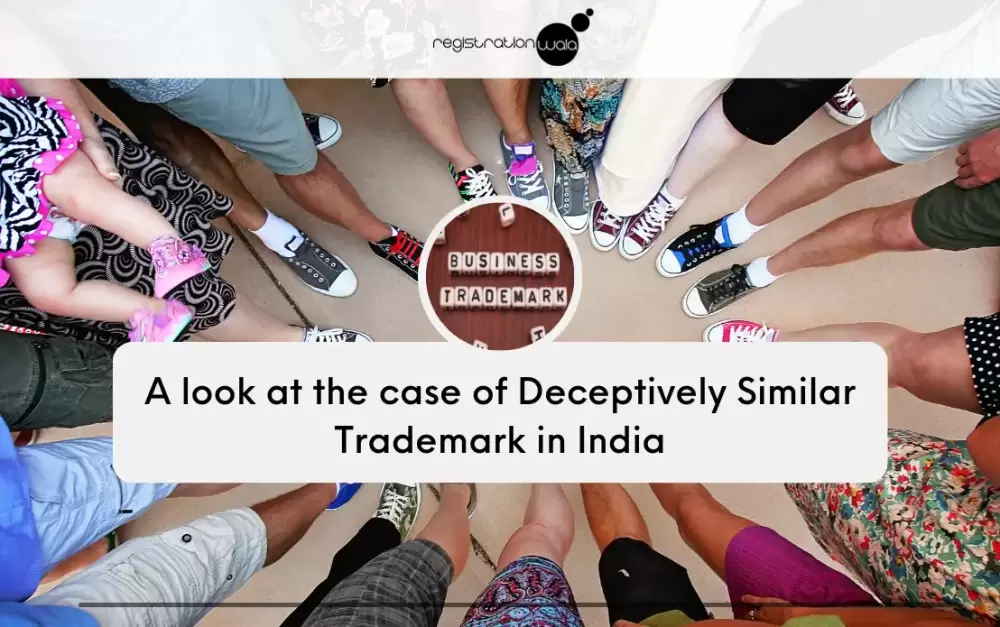What is Deceptively Similar Trademarks Case in India | Brief Example
- October 27, 2022
- Registrationwala

- Home
- /
- Knowledge Base
- /
- IPR Services
- /
- Trademark Registration in India
- /
- What is Deceptively Similar Trademarks Case in India | Brief Example
What is Deceptively Similar Trademarks Case in India | Brief Example
One of the biggest hurdles in the way of getting the trademark registered is the similarity of the trademark with an existing mark. It is crucial to understand and make sure that your trademark is unique i.e. it is not deceptively similar to the existing marks. Get to know about Deceptively Similar Trademark Examples with Case defined below for better understanding.
In order to be registered as the trademark in India the said mark must fulfill the criteria of distinctiveness, non-similarity, not prohibited by law etc. One of the most common ground on which the trademark application is objected is the trademark being deceptively similar. Even if the trademark registration is granted the owner can feel the heat as trademark infringement. You may wonder what is trademark infringement in India? Trademark infringement occurs it is believed that the registered trademark is being exploited by any third person.
According to Section 11(1) of the trademark act 1999 a trademark cannot be registered in India if it is identical with an existing trademark and the goods and services covered by the proposed mark are also similar that is likely to create confusion on the art of public at large. Through the course of this article we will understand what a deceptively similar trademark is.
What is deceptively similar mark?
According to the Section2 (h) of the trademark Act 1999, the deceptively similar mark is defined as “A mark is deemed to be deceptively similar to another mark if it so merely resembles that other mark as to be likely to or cause confusion”.
In simple words it can be said that the trademark is considered as the similar to the existing one if it is believed that a regular prudent man is likely to get confused between the two marks. The similarity is determined on the basis of the sight, phonetic similarity, color combination, designing and the overall makeup of the mark.
How to compare two trademarks?
The rules of similarity between the trademarks are developed on the basis of the famous case of Parker J. in Pianotist over the years. The multiple principles on the similarity between the trademarks is determined are as follows-
- While making the comparison the point of the person who is deemed to have average intelligence.
- The facts to be considered includes the overall structure of the marks, visual or phonetic similarity, idea behind the two marks and most importantly they are likely to create confusion among the public at large.
- The part of the trademark cannot be compared with other mark rather the whole trademark shall be taken for comparison.
- The detailed comparison or the letter by letter comparison is not required to be conducted. The side by side kind of test is not correct.
Famous Deceptively Similar Trademark Case
The case was between the famous coffee house “Starbucks” and the “Sardarbaksh” that started of its business on the cart and later on opened five outlets throughout Delhi. Starbuck is a famous registered trademark all over the globe. According to the facts of this case the court asked Sardarbaksh to convert its name into Sardar-Baksh. This order was passed as it was believed that Starbucks is a globally recognized trademark across globe in comparison to the Sardarbaksh and it would be unfair on their part it such trademarks are allowed.
- 7694 views
